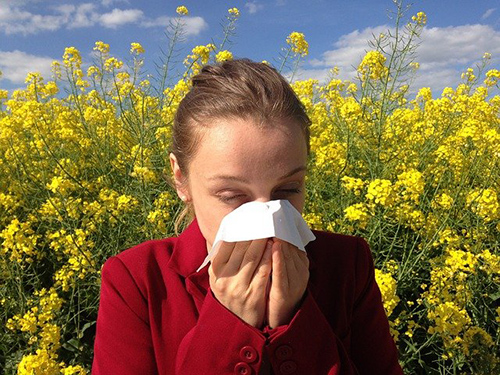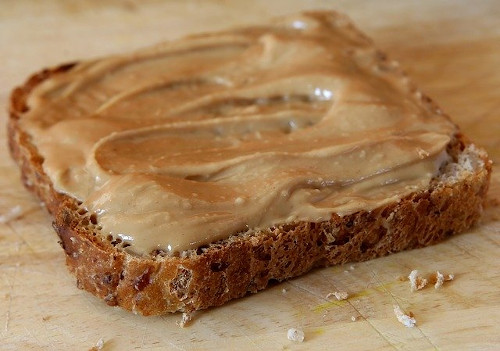You’ve come to the right place if you’re here to find out about foods that cause allergies. However, before we get into the foods that can cause allergies, let’s learn more about this condition and how they affect you. Firstly, an allergy is the body’s rejection of a chemical substance known as an allergen or antigen. This reaction is disproportionately intense due to its seeming innocuousness and minute allergens. Causes of allergies: Any chemical substance, whether ingested with food, inhaled, or introduced into the body by any other means, can cause an allergic reaction.

Foods as a cause of allergy: The foods described in this article frequently cause allergic reactions. Their consumption can also contribute to allergic reactions to other foods or substances. For instance, in sensitized individuals, milk may precipitate an allergic reaction to other foods or substances and potentiate other allergic reactions.
Antiallergenic diet: In any instance of allergy where the cause is not clear, an antiallergenic diet that eliminates foods that often cause allergies, such as those in this article, is recommended. Afterward, slowly and in a carefully controlled manner, foods may be added back until the symptoms reappear.
Allergy manifestations: Food allergy symptoms tend to appear most frequently on the skin, the respiratory system, and the digestive system, independently of the port of entry of the allergen. Many cases of eczema, rhinitis, asthma, migraine, and colitis are allergic reactions and may be initiated or exacerbated by one or more of the foods that cause allergies listed here.
Individual sensitivity: An allergic reaction to a specific food or product is only manifested in individuals who are sensitive to it. This is highly individualized; no foods or products produce allergies in everyone. Theoretically, any food, product, or substance can cause an allergy in a sensitive person.
Other adverse food reactions: Intolerance or intoxication caused by certain foods must be distinguished from allergies since their mechanisms are very different.
Foods That Cause Allergies

MILK: Cow’s milk is one of the primary foods that cause allergies in infants and adolescents and may or may not coincide with lactose intolerance. Milk allergy is produced by the rejection of milk proteins and is manifested in cutaneous (eczema, atopic dermatitis, urticaria), digestive (flatulence, diarrhea), and respiratory (asthma) symptoms. Some instances of cow’s milk allergy go undiagnosed and contribute to allergic reactions to other foods. Common food allergies that develop in adults tend to cause migraines.
FISH: This is another one of the primary foods that causes allergies. In children, it tends to manifest itself as atopic eczema or asthma, and in adults, it can cause urticaria, asthma, and other allergic symptoms. Generally, various species of fish cause allergies. Eating anisakis-infested fish is a frequent cause of this type of allergy.

SHELLFISH: Shellfish is among the top 10 most common food allergies. In some cases, shellfish allergy is due to the parasitic anisakis larvae they contain. In other cases, it is a reaction to shellfish proteins. Shellfish allergy is a different process than the infections or intoxications they cause.
EGG: The egg white protein ovomucoid causes allergic reactions in children and adults. Atopic dermatitis and asthma are the most common manifestations of egg allergy.
MEAT: A study at John Hopkins University in Baltimore showed that many children allergic to cow’s milk are also allergic to beef. This is explained by the similarity of the milk and beef proteins. Regular meat consumption, mainly if it is not well cooked, can lead to allergies in children as well as adults.
CURED CHEESES: The milk proteins in cheese can cause allergies. Also, the egg protein lysozyme, which is used in some cheeses, also provokes allergies. Vasoconstrictive amines in cured cheeses, such as tyramine and histamine, cause allergic reactions.
Unfortunately, Chocolate Can Cause Allergies
ADDITIVES: The most allergy-producing food additives are coloring, benzoic acid, and sulfites. Their manifestations are cutaneous (eczema, urticaria and respiratory (rhinitis, asthma).
ALCOHOLIC BEVERAGES: Wine and beer tend to produce allergies because of their chemical and additive contents. Wine also contains substances such as tyramine that promote allergic reactions. Beer causes allergy because of its yeast residue.
SPICES: Spices are among the most common foods that cause allergies. Also, they are among the foods that cause skin allergies by contact. Spices can also be problematic when inhaled and ingested. Manifestations tend to be cutaneous, respiratory, or digestive.
CHOCOLATE: Chocolate contains a stimulant, phenylethylamine, that can cause allergy.
HONEY: Investigations at the University of Vienna (Austria) found that honey allergy is due to small amounts of proteins from the bees’ pharyngeal glands and pollen residue.
GLUTEN: This protein is found primarily in wheat, barley, and rye. It causes celiac disease in sensitive individuals. It also initiates atopic dermatitis and eczema.

NUTS: Nuts can produce allergies, particularly in children. Cutaneous eczema is their usual manifestation. Peanuts and peanut butter cause allergies with a certain frequency.
VEGETABLES: The two most allergenic vegetables are celery and carrots. They should be avoided until it has been shown that they are not the cause of allergic reactions.
FRUIT: kiwi, papaya, avocado, banana, strawberries, raspberries, and currants are the most common food allergies pertaining to fruits.
A Raw-Foods Diet Benefits The Skin
Many skin conditions, particularly those that are allergy-related, disappear by eating a diet based on raw fruits and vegetables for several days. Fruits and vegetables are best eaten naturally without any culinary or industrial processing. Salads may be dressed with oil and lemon.
DISCLAIMER: All content on this website is presented solely for educational and informational objectives. You should not rely on the information provided as a replacement for advice, diagnosis, or treatment from a qualified medical expert. If you are pregnant, nursing, or have any preexisting medical concerns, you should talk to your doctor before using any herbal or natural medicines.
REFERENCES
- George D. Pamplona-Roger, M.D. “Encyclopedia of Foods and Their Healing Power.” George D. Pamplona-Roger, M.D. Encyclopedia of Foods and Their Healing Power. Trans. Annette Melgosa. Vol. 2. Chai Wan: Editorial Safeliz, 2005. 333-334. [Foods that cause allergies]
- American College of Allergy, Asthma & Immunology (ACAAI):https://acaai.org/
- Food Allergy Research & Education (FARE):https://www.foodallergy.org/
- “Natural Approaches to Food Allergy Management: A Review of the Evidence” by Tariq et al. (2019): https://www.ncbi.nlm.nih.gov/pmc/articles/PMC5056872/
